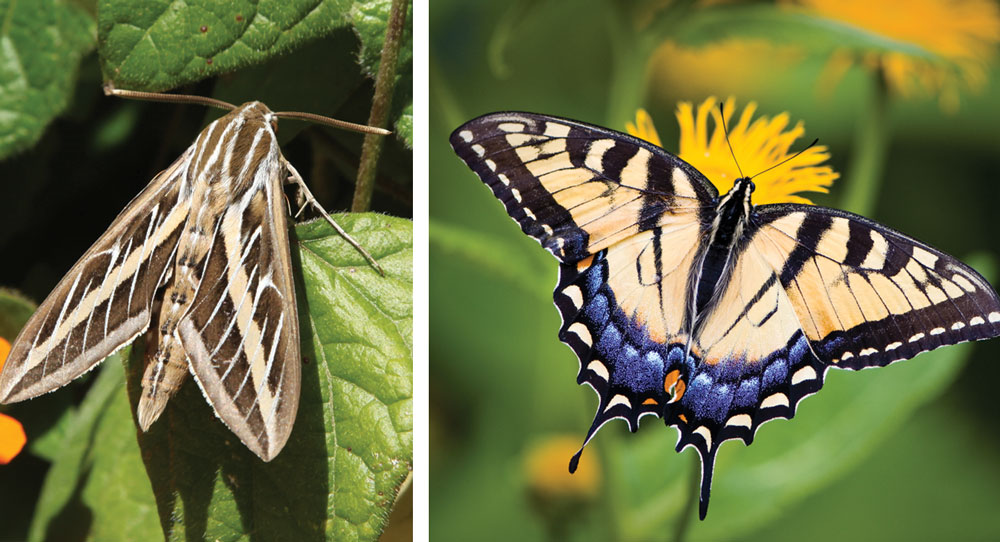What’s the difference? That's the theme for this column.
Moths vs. Butterflies
We see fluttering wings, but is it a butterfly or a moth? Generally, butterflies are diurnal, meaning they fly and flitter in the daytime. Yet, a few butterflies are active at sunrise and sunset. Moths, on the other hand, are nocturnal.
One way to tell the difference is by their antennae. Butterflies have long antennae with a ball shape at the end. Moths' antennae are saw-edged or feathery.
You can also tell the difference between the two by the way they fold their wings. A butterfly folds its wings upward, vertically from their abdomen, their body. Moths fold their wings downward at their sides, like a tent.
SIDE NOTE: We mentioned that moths are nocturnal. We are both early risers. With the cooler weather, we might open the back door off of the kitchen to enjoy the morning air. Therefore, we have yellow bug lights in the fixture above the kitchen sink. That way, when we turn on the light in the morning to make coffee, we are not inundated with moths.
Frost Susceptible vs. Frost Tolerant
A frost-susceptible vegetable/fruit/crop will be killed or injured by temperatures below 32 degrees, according to Texas A&M AgriLife Extension. Frost-susceptible plants include bush bean, summer squash, cucumber, sweet corn, lima bean, okra, pepper, cherry tomato, cantaloupe, eggplant, Irish potato, pumpkin, sweet potato, tomato, watermelon, and winter squash.
A frost-tolerant vegetable/fruit/crop can withstand temperatures below 32 degrees. (Most frost-tolerant plants will likely survive light to moderate frosts but could be damaged or killed by exposure to frost and temperatures below 25 degrees.) Some familiar frost-tolerants are beet, leaf lettuce, mustard, radish, spinach, turnip, turnip green, broccoli, carrots, Chinese cabbage, green onion, kohlrabi, parsley, Brussels sprouts, bulb onion, cabbage, cauliflower, and garlic.
Crepe Myrtle vs. Crepe Murder
Crepe myrtles come in all different sizes. Some can reach a height of 25 feet or taller. Know what tree you are planting and how high it will grow.
Crepe murder is when folks simply cut off the tops of the tree, and it looks like a stubby bush with purty flowers on top.
When pruning a crepe myrtle, start by removing the suckers, those little branches sticking out everywhere. Begin at the bottom and work your way up. Next, trim side branches that are less than 4 feet long. These branches are pulling weight away from the base. We want our sturdy tree to stand tall.
Also, remove branches that are crossing over or twisting through the center. The objective is to have a stable center with healthy branches. Space between the center branches is important for sunlight and air circulation. For instance, a bird should be able to comfortably fly through the branches.
Folks have asked if they should remove the seeds after the blooms expire. The seedheads feed the birds and will not affect blooming next season.
As Halloween approaches, pumpkin patches are growing. Lots of joy to be had with family, friends, and vegetables!
Till next time. Keep your souls and soles in your garden!
Remember the True Master Gardener: Jesus said, “I am the vine; my Father is the Gardener.” John 15:1
"In the Garden" is written by father-daughter duo Bill and Martelle Luedecke. Contact Martelle Luedecke at 512-769-3179 or luedeckephotography@gmail.com. Contact Bill Luedecke at 512-577-1463 or bill@texasland.net.

